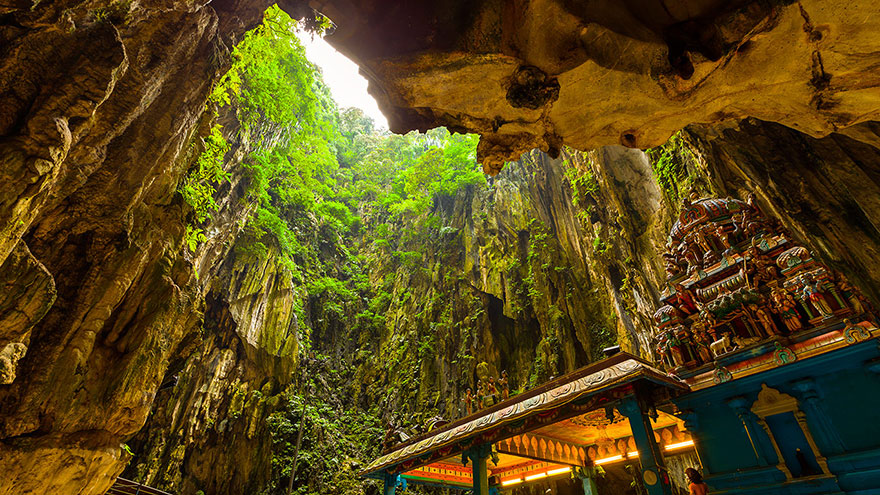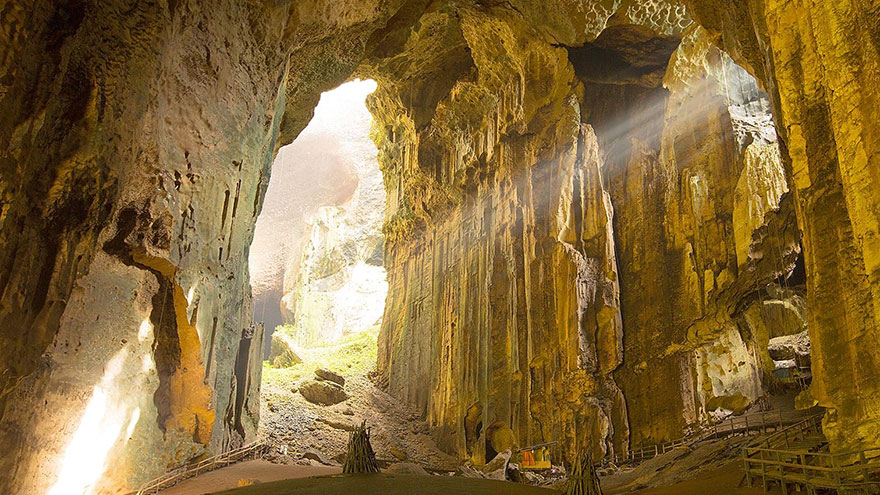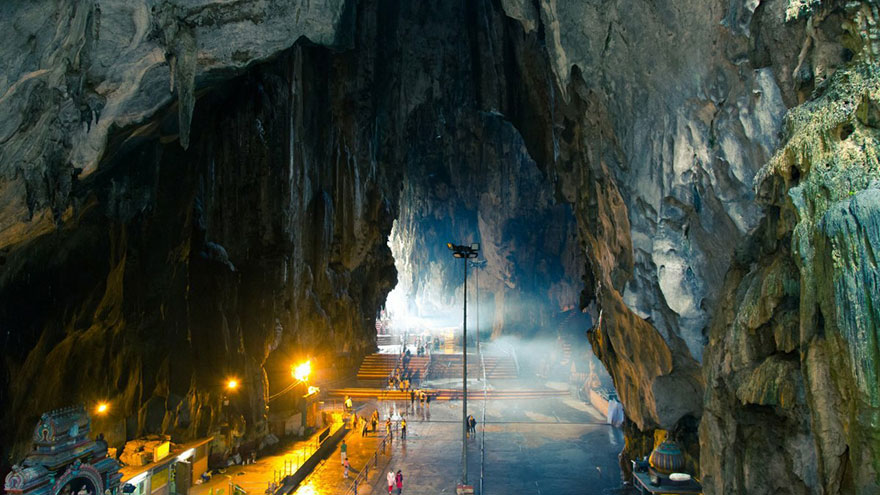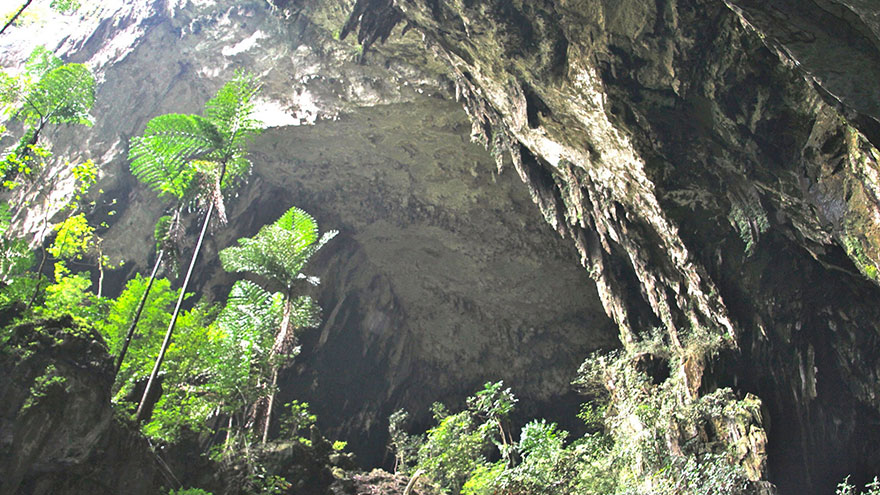Caving in Malaysia
It’s surprising that Malaysia doesn’t belong to any international cave associations and has so few active spelunkers in its population. While that would imply that there’s nothing going on under the surface of the jungly Southeast Asian country, there certainly is.
Liz Price, Malaysia’s Cave Representative for the International Union of Speleology, points out that several of Malaysia’s many caves are record-breakers: The country is home to “some of the biggest and longest caves in the world,” offering unique anthropological, geological and biological attractions. While many of Malaysia’s caves are closed to nonscientific exploration, several allow interested — and brave — tourists to plumb their depths.
Gunung Mulu Caves

The world-famous caves in Sarawak’s Gunung Mulu National Park were inscribed as a World Heritage Site in 2001. Some of the park’s thousands of feet of cave passages lead to the hulking underground temple at Gua Nasib Bagus — in 2013, the world’s largest chamber on record — and Clearwater Cave, the ninth longest cave in the world.
Respectful visitors to the park are welcome to tour the accessible parts of the cave, but should leave no trace of their passage; as it’s a very popular site, the caves at Gunung Mulu fight a constant battle against “souvenir-snagging” and graffiti.
As a popular destination, access to the Gunung Mulu caves is easy but tour-based, requiring visitors to sign up for a group at the information kiosk.
Niah Caves

Also in the Sarawak region, the Niah Caves present fascinating evidence of the day-to-day life of prehistoric humans. Famous for the 40,000-year-old human skull recovered within its limestone caverns — as well as several 1,200-year-old rock paintings and coffin-canoes — the cave is thought to record some of what life was like when Malaysia was connected to the greater Asian continent.
Aside from the human story, the Niah Caves have great biological significance: They’re a key nesting site for swiftlet birds and bats. Reach the cave entrance by following a roughly 2-mile boardwalk from the information kiosk. A lovely stroll in its own right, the trail unfolds over a peat swamp and along limestone outcrops that hint at the dramatic geology that lies beneath.
Gomantong Caves

Located deep in thickly forested Sabah, the Gomantong Caves could have been described by J.R.R. Tolkien. They appear as a huge vertical cleft in a rocky mountainside, leading into a massive inner chamber that resembles a troll-built cathedral.
Cockroaches and scorpions skitter through patches of light and shadow, swiftlets flit across the roof and wild orangutans sometimes prowl the forest outside the entrance. Beware: The Gomantong Caves will off-put all but the most intrepid adventurers, as most of the inner surfaces are coated with smelly guano.
To reach the main cave entrance, pass the information kiosk and walk along the main trail for about 10 minutes. Other entrances lie about an hour further up the trail, but the access is steep and requires low-level bouldering to approach.
Caves of Peninsular Malaysia

Peninsular Malaysia has a small collection of readily visitable caves, as well. Just north of Kuala Lumpur, the famous and much-touristed Batu Caves host the annual Thaipusam festival. The fauna-filled “Dark Cave” — part of the same greater cave network as Batu — stands as one of the peninsula’s longest examples.
The underground temples at the Perak caves, outfitted with modern electric lighting and gentle walkways, allow even young and physically challenged individuals to explore the impressive river passage that flows through. Finally, the World Heritage cave at the northerly Lenggong Valley offers another peek at ancient mankind: Here, spelunking anthropologists discovered an 11,000-year-old skeleton.
Wild Cave Access

Malaysia’s wild caves present a conundrum for visiting speleologists. Few of the caves outlying national parks are legally protected from access, but the country’s lack of a speleological community means that proportionately few have been surveyed — and it’s difficult to find a group to join for safety
A large ratio of the wild caves open to the exploration of safe, experienced, well-equipped spelunkers are within Perlis State Park in Taman Negara, in Kenong Rimba Park, in Gunung Senyum Recreational Park and in Gunung Stong State Park. To visit these, register at the park information kiosk.
You Might Also Like :: 5 Awesome Things About Expat Life In Penang Malaysia

